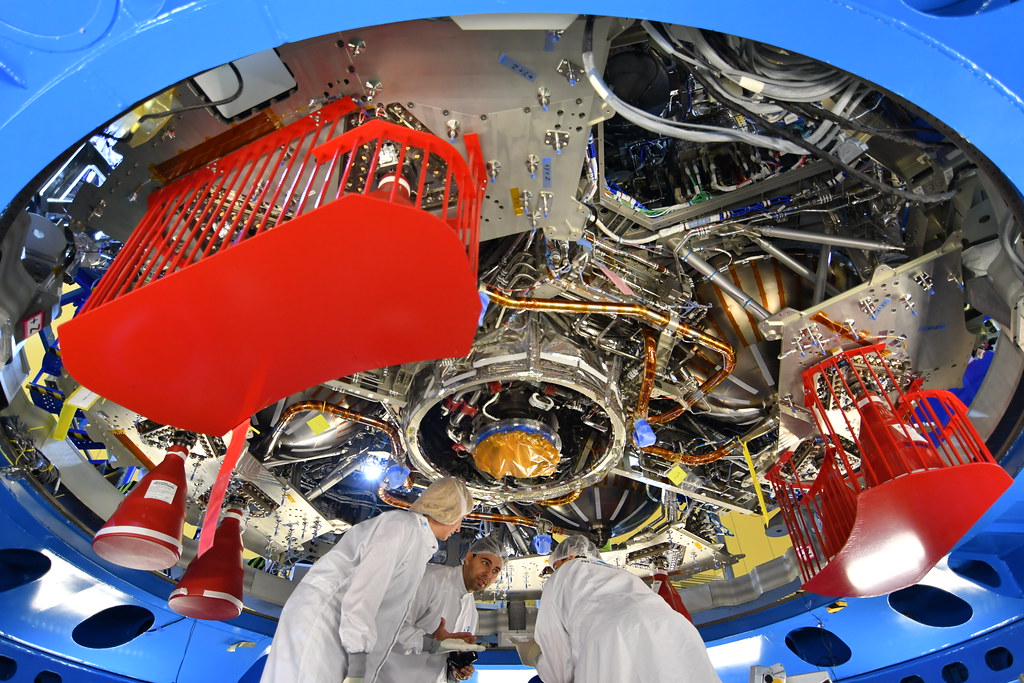Update: As Switzerland is a multi-lingual country we have translated this blog entry into French, German and Italian.
Switzerland is a small, landlocked country, so maybe it is logical that they are large players in European spaceflight. The Swiss contribution to taking humankind forward to the Moon with the European Service Modules for the Artemis programme comes in two forms: ground support and moving the solar wings.
APCO technologies based in Aigle, where the Rhone river runs into Lake Geneva, are making and supplying the mechanical ground support equipment often lovingly (we imagine) shortened to MGSE by the people using the equipment every day. Think of the large structures that support the European Service Modules as they are built up. But also the transport carriers to move the modules inside their integration hall in Bremen, Germany. You will see the company logo on many of the photos made during transport.
As workers build up the modules segment by segment, they are turned like a (slow and carefully operated) merry-go-round to have easy access and to allow the cranes access to slot in the four large fuel tanks. Basically, the European Service Modules are built on a large rotating platform, and this too is made by APCO. The company has huge experience as they provide these MGSE services at Europe’s spaceport in Kourou to all the Ariane and Vega launchers.
Soaking in the Sun
People who enjoy soaking up the sunlight but are far from a beach, know that eventually you will need to move your chair or spot to stay out of the shade as the Sun moves across the horizon. The European Service Module uses solar panels for electricity, unlike the fuel-cell-based Apollo missions, and so flying in space at speeds of 28 800 km/h between Earth and the Moon, the solar panels need to track the Sun to get as much sunlight as possible.
Here Beyond Gravity comes in to shine. The Swiss company formerly known as RUAG Space with sites all over the world has delivered from Zurich the electronics and the mechanism that forms the Solar Array Drive Assembly for the first three European Service Modules. These components have a daunting task to move the four 7-m long wings in four directions of motion. They can swivel and pivot and as batteries can only take you so far, the solar array drive is an important part of the European Service Modules. The electronics have to be reliable and the mechanism strong and precise.
Secondary structure
Beyond Gravity’s contributions do not stop at the solar array drives though, the company also supplies secondary structures that leave Zurich for Bremen, Germany, that are added to the primary structure as it is built up. These vertical struts support vital components such as the Solar Array Wings themselves, reaction control system clusters of Airbus engines, and the water and gas delivery systems.



 Automated Transfer Vehicle page
Automated Transfer Vehicle page ATV blog archive
ATV blog archive
Discussion: 2 comments
The Apollo service module was not nuclear powered! It had fuel cells using H2 and O2 to produce H2O and electricity. Only some science payload designed to stay in the Moon were nuclear powered
Absolutely, how did that pass by editorial? Thanks for setting the record straight! The text has been updated.